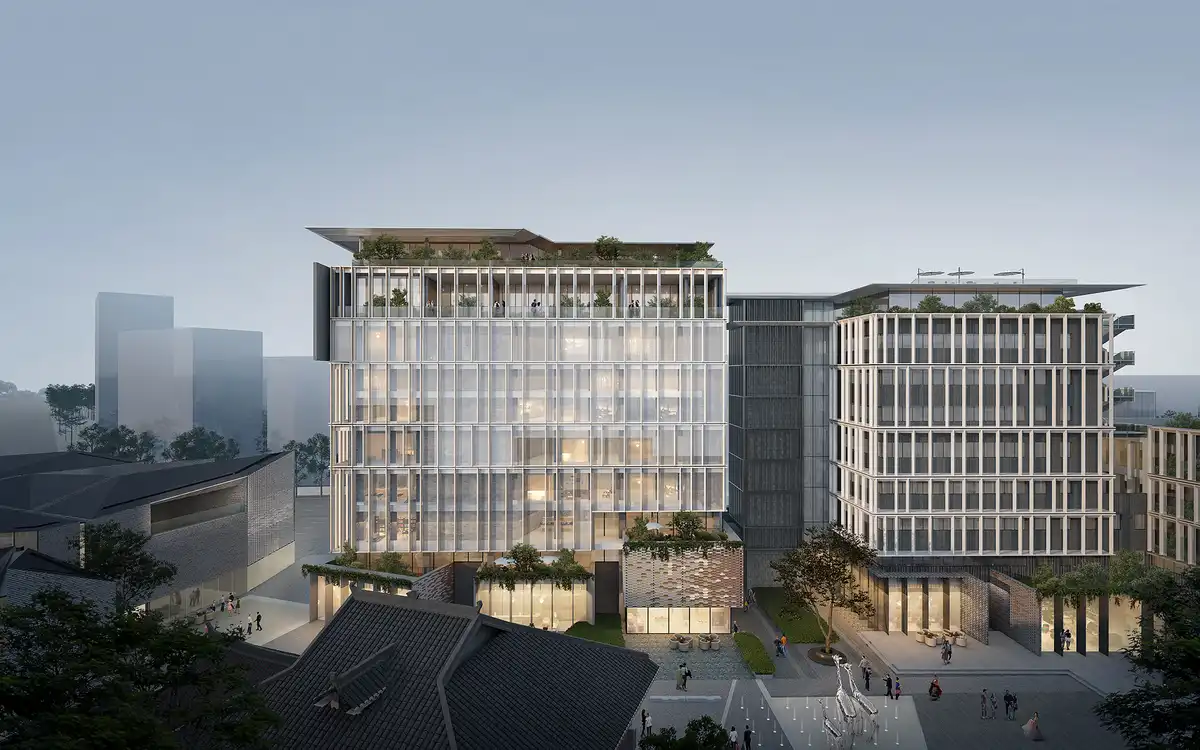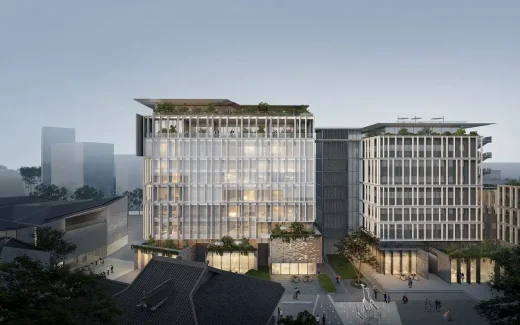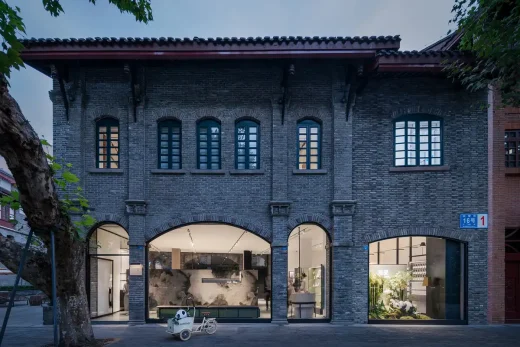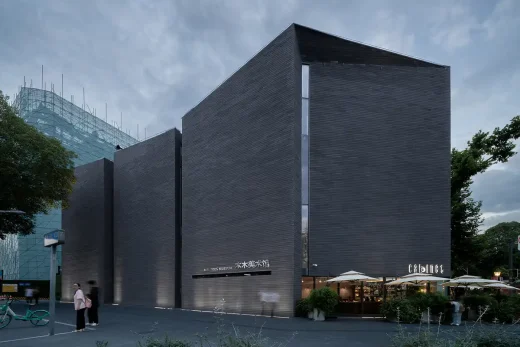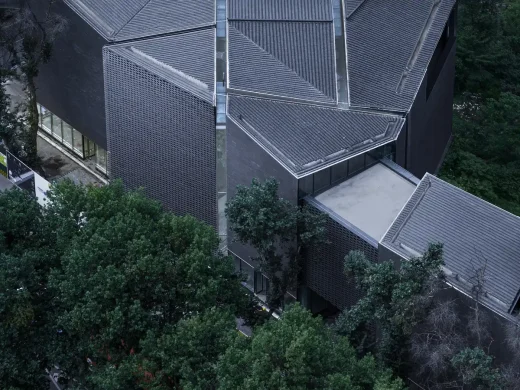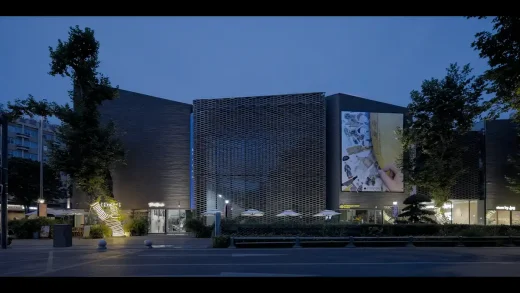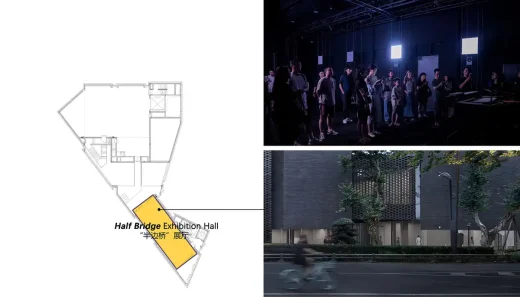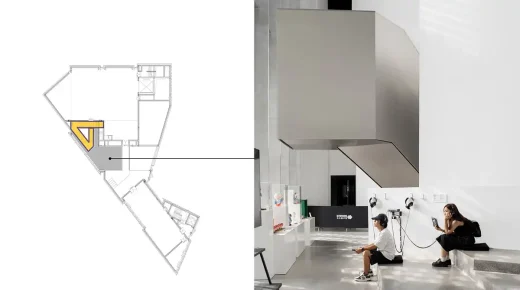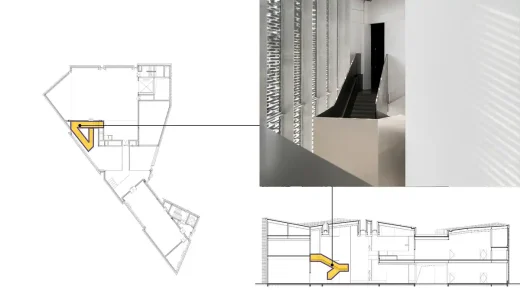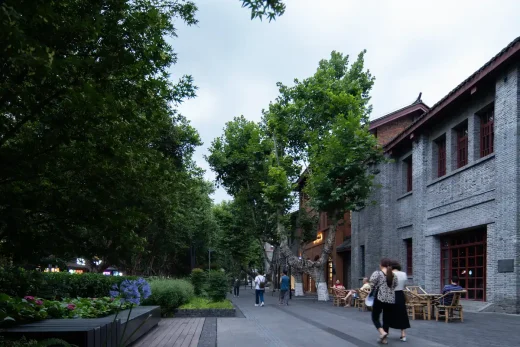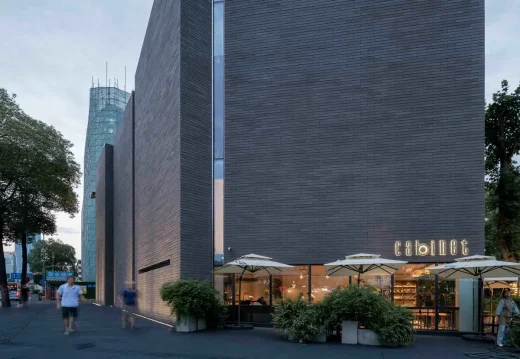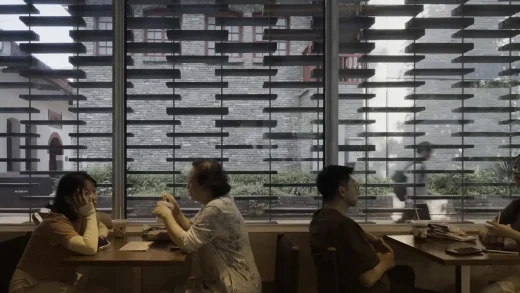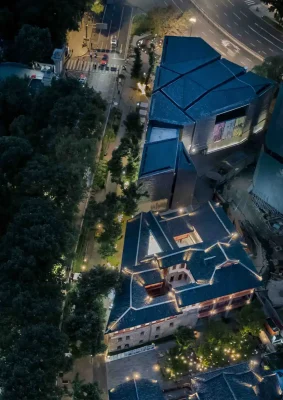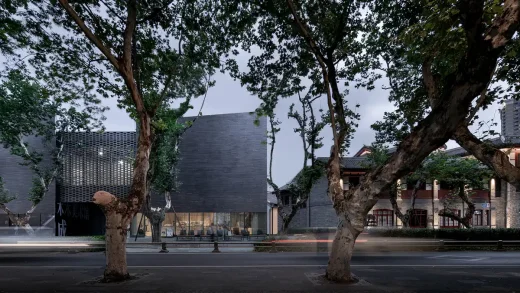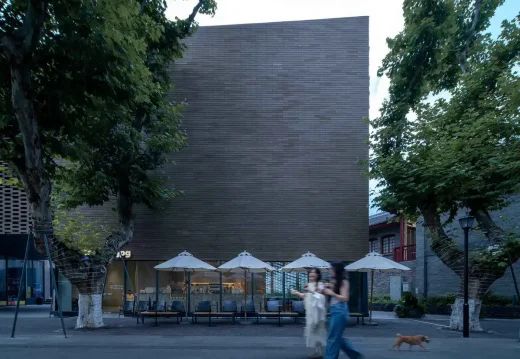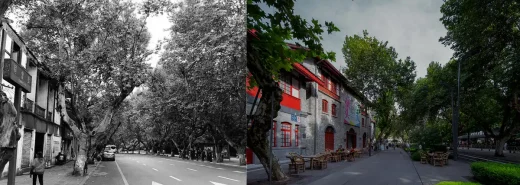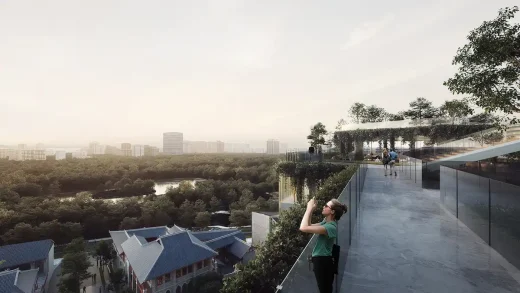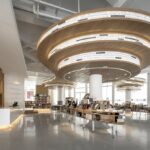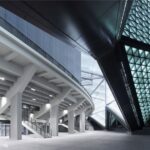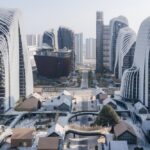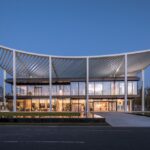Citang Street Regeneration Chengdu, China building complex images, Modern Chinese architecture design
Citang Street Regeneration in Chengdu
3 November 2024
Architecture: China Southwest Architectural Design and Research Institute Corp. Ltd
Location: Chengdu, People’s Republic of China
Photos by 404NF STUDIO
Citang Street Regeneration, China
As the birthplace of Chengdu’s new culture movement and new business, Citang Street still has many buildings for strategies of the protection of historical and cultural heritage. Its reconstruction and expansion project adopts organic renewal organizing the traditional urban space, opening up the connection with People’s Park, introducing park green scenery, repairing and revitalizing historical buildings, creating three-dimensional neighborhoods and creating green streets in the sky. By linking streets with alleys, this project brings out Citang Street’s long cultural context, and awakes the memory of Chengdu center.
In the center of Chengdu, at the southernmost end of Shaocheng, there is a park street. From east to west, you will pass by old houses with blue bricks and red walls, such as Zhang Caiqin’s old studio, Sichuan Fine Arts Society, and the former site of Xinhua Daily, which are shaded by sycamore trees. The triangular block formed by Shudu Avenue on the north and People’s Park on the south is the location of the Citang Jie project.
Citang Jie was first built during the reign of Emperor Kangxi of the Qing Dynasty. In the Shaocheng period, it was based on the layout of herringbone blocks. After being renovated by successive dynasties, it presents a pattern of vertical and horizontal neighborhoods and integration with parks. The block buildings span a century, with both historical building communities and buildings built in the late 20th century. There are many cultural relics protection units and historical buildings in the block, and the style is mainly western Sichuan dwellings. Some buildings have the style characteristics of “Western learning spread to the East, and Han and foreign compromises” during the Republic of China period. This is the platform for the new cultural movement in Chengdu and the starting point for the modernization of Tianfu culture. Art and literature here truly go to the masses.
The Citang Jie organic renewal project was started in early 2022. The design adopts an overall strategy that fits the block renovation, leveraging the vitality and greenery of People’s Park, taking the art block as the design highlight, and creating a “three-dimensional art block in the park”.
Combing of the traditional urban space
The Citang Jie in history is a traditional commercial block. Together with the People’s Park, it carries the citizens’ demand for cultural and commercial services. The existing urban roads have severed the communication between the block and the park, and the narrow street space has restricted the development of commercial activities. The design integrates the People’s Park with the green block to create a green neighborhood by widening the slow-moving space of the Citang Jie and demolishing the walls of the People’s Park.
Sorting and creating streets and alleys. The design uses the historical streets of the Citang Jie and Yongshun Lane as the skeleton, sorts out the regional streets and alleys, demolishes the illegal buildings that have increased over the years, restores the hutongs and lanes in history, and forms a neighborhood space system with a pleasant scale. The design introduces the greenery and popularity of the People’s Park into the center of the street by opening the entrance and exit facing the People’s Park, connecting it with Shudu Avenue on the north side, so that various rich commercial experience activities can be carried out along the streets and alleys.
Connecting to People’s Park, before the renovation, Citang Jie was a two-way four-lane road, with the width of the sidewalks on both sides less than 3 m. After communicating with the owner, the Traffic Management Bureau and other departments, Citang Jie was finally adjusted to a one-way two-lane road, and the slow-moving space on the side of the ancient building was widened (up to 9 m), making the outdoor space of the building and the space under the plane trees more pleasant; the wall on the side of People’s Park was demolished to open the park green space to the street. The quaint Citang Jie and the green park are connected to the maximum extent, and the tall and dense plane trees extend from the park to the streets, making the center of the street a part of the park.
Restoration and revitalization of historic buildings
The design of the reconstruction and expansion of the Citang Jie has always implemented the design concept of “Juci & Jinshan and Organic Renewal”. “Juci & Jinshan” is a traditional Chinese craft, which is a process of reshaping perfection through incompleteness. The lines are sorted out from the broken porcelain, repaired with rivets, or glued with natural lacquer, and applied with gold powder and gold foil. The historical buildings in the block are like porcelain fragments that witnessed the history, and modern buildings such as the building on the north side and the street space that has been revitalized are like new porcelain and gold foil used to repair porcelain. This “Juci & Jinshan” design method not only respects history, but also provides a new aesthetic effect for the block.
The renovated old buildings have been re-endowed with urban functions: the introduction of brands that meet the modern needs of citizens has revitalized the dark-cyan bricks and gray tiles that have been silent for too many years; the facades and interior spaces of the buildings have been cleaned and restored, allowing citizens and tourists to explore this unique Sichuan-Western architectural community in Chengdu.
The construction of three-dimensional neighborhoods
Due to the small area of the site, the development is easily restricted. The scale and size of the Citang Jie are far less than those of the nearby characteristic blocks such as Taikoo Li and Kuanzhai Xiangzi. Therefore, the design makes full use of the vertical space of the block to strengthen the sense of extension in the vertical direction. The courtyard space is an activity space that is deeply loved by the people of western Sichuan. The design team arranged the ancient buildings and the renovated commercial “boxes” around the central “Yuangba”, creating a pleasant scene for people to “taste a bowl of tea in the heart of the Citang Jie” under the trees.
The greenery permeated by the People’s Park and the central green heart of the block together constitute the primary greening of the block; along the roof of the center of the Citang Jie, you can go up to the second-floor commercial corridor, and the connected commercial space is combined with the green leisure platform to form a green belt, which enriches the commercial experience in the block and constitutes the secondary greening of the block; from the second-floor commercial green belt, you can walk up to the high-rise roof of the building. The design team set up a through trail on the high-rise roof, combined with the roof vegetation to form a green corridor, creating the third-level greening of the Citang Jie block. The design connects and integrates these three levels of green to create a three-dimensional, green art block.
The “New Voice” of the Citang Jie: An Art Gallery in the Neighborhood
The building located at the northwest corner of Citang Jie was reconstructed into an art gallery. It needs to take into account the elegance of Citang Jie and the modernity of Shudu Avenue. The small-scale street space, the historical architectural textures with different styles, and the triangular land use scope all pose considerable challenges to the spatial design of the art gallery. While considering the building’s conformity to the urban context, the design team also needs to consider meeting the needs of the art gallery’s large exhibition hall and square exhibition layout. The overall design extracts the main axis direction of the historical building, divides the art gallery’s volume into 5 roof plane spaces of different sizes, and controls the width of each form to a scale range of 8 m to 10 m, so that it echoes the scale of the streets and the historical buildings, and can well complete the layout of the building form within the triangular plot.
The design breaks up the building form, not only forming a harmonious roof form, but also achieving a form control effect combined with the indoor exhibition hall space. The five small-volume “boxes” are divided into two groups, corresponding to the “art gallery entrance + exhibition hall space” and the “art gallery exit + derivatives store”, which are connected by a street arcade. This design technique makes the side of Citang Jie and the ancient building space have a sense of continuity on a human scale, meeting the needs of the urban volume on the side of Shudu Avenue. The design coordinates the new form with the old architectural style through the undulating and continuous slope roof changes, while making the building both modern.
Historically, there was a “Half-Side Bridge” at the junction of the East Street of Citang Jie and the Xiyu Street. This bridge was one of the dividing lines between the inner and outer cities of Chengdu by successive dynasties. In the late Qing Dynasty, the bridge was divided into two halves by the Shaocheng Water Barrier, with the west side of the bridge in Shaocheng (now People’s Park) and the east side in Dacheng, hence the name “Half-Side Bridge”. During the Republic of China, the “Half-Side Bridge Laoma Trotter Restaurant” opened here was the last memory of this bridge. Today, the Shaocheng Water Barrier is no longer there, and it is difficult to find the original site of the “Half-Side Bridge”. We hope that this art museum can continue the memory of the neighborhood and reproduce the history of the “Half-Side Bridge”.
The facade of the art museum adopts a combination of ceramic panels and hollow ceramic tiles, which not only distinguishes the new and old buildings, but also echoes the traditional materials such as blue bricks. The design adopts a ceramic tile size of 480x120x90 mm, which is exactly twice the size of blue bricks. This scale is based on the size of the art museum and the hope that its delicate texture will be coordinated with the mottled blue brick facade of the old building. The design uses stainless steel locks to connect the hollow brick curtain wall. Through the parametric gradient combination of four ceramic tiles with thicknesses of 22.5 mm, 45 mm, 67.5 mm and 90 mm, the shadow of the sycamore leaves projected on the blue brick wall is simulated, creating a dreamy indoor and outdoor effect.
The alternating use of solid ceramic panels and hollow ceramic tiles corresponds to the different spatial requirements of the interior, and the intersection of the two structures also poses a challenge to the design team. After multiple rounds of communication with curtain wall professionals, model deliberation and on-site proofing verification, the design team finally set a 6 mm thick stainless steel plate at the intersection of the angle bisectors of the two structural surfaces, using it as the closing of the ceramic tiles and ceramic panels, and at the same time beveled the materials on both sides, so that the three together form a delicate structural conversion effect.
The Conclusion
The organic renewal project of Citang Jie hopes to awaken the vitality of this old street and present the Tianfu culture and Chengdu memory to the public in a new way. After the completion of the first phase of the project, several buildings completed in the 20th century will also enter the subsequent renovation stage, and the story of the century-old literary and artistic Citang Jie will continue in the future.
Citang Street Regeneration in Chengdu, China – Building Information
Zheng Yong Chief Architect at China Southwest Architectural Design and Research Institute Corp. Ltd
Chen Jiale Vice Chief Architect at China Southwest Architectural Design and Research Institute Corp. Ltd
Project location: Qingyang District, Chengdu, Sichuan
Year: December 2021 – May 2024
Completion (Phase I): July 2023
Client: Chengdu Xingguanghua Urban Construction Co., Ltd.
Design: China Southwest Architectural Design and Research Institute Co., Ltd.
Land Area: 16,208.63 m2
Building Area: 34,375.39 m2
Structural form: steel structure
Project Team
Lead Architect: Zheng Yong
Deputy Lead Architect: Chen Jiale
Architecture: Zhang Zongteng, Liu Yu, Xu Wenqi, Wang Yixuan, Li Botao, Li Yi, Li Yue,Zheng Hancong
Structural Engineers: Yi Dan, Wang Heng, Tang Min
Water Supply and Drainage Engineers: Xiao Sida, Wen Zhiwei
HVAC Engineers: Gong Bo, Bai Yinghe
Electrical Engineers: Li Guohui, Zhu Ke
Building Intelligence Engineer: Zhang Jing
Curtain Wall Façade Engineers: Yin Bingli, Cai Honglin, Cheng Chao, Zhou Chunxiao, Fan Haibo
Architectural technology: Luo Jing, Chen Jun
Landscape Architect: Ouyang Shuang (Chengdu Jizhun Fangzhong Architectural Design Co., Ltd.)
Photography: 404NF STUDIO
Citang Street Regeneration, Chengdu, China images / information received 031124
Location: Chengdu, China
New Wuhan Architecture
Sunac · Wuhan 1890 Buildings
Sunac · Wuhan 1890, No. 170, Qintai Avenue, Wuhan City
Design: Lacime Architects
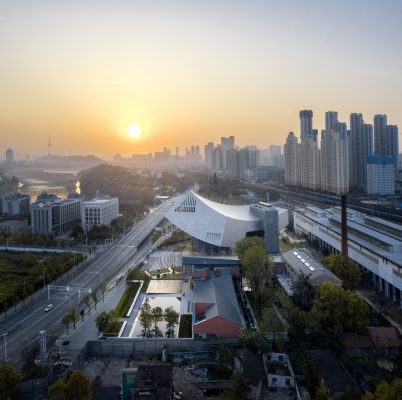
photo : Inter_mountain
Wuhan SUNAC 1890, Hanyang District
Contemporary Buildings in Wuhan, China
Sino-Ocean Sales Center in Wuhan
Design: Waterfrom Design
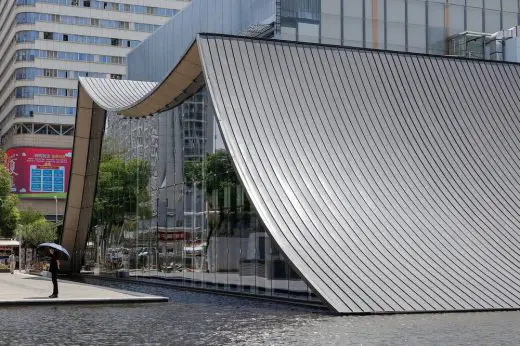
photograph : Yuchen Chao
Sino-Ocean Sales Center Wuhan
Light Waterfall Design
Architects: Kris Lin International Design
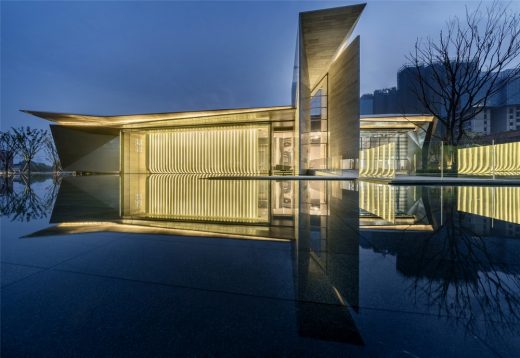
image courtesy of architects practice
Light Waterfall Wuhan
Huafa & City Hub
Architect: Qin Yue-Ming
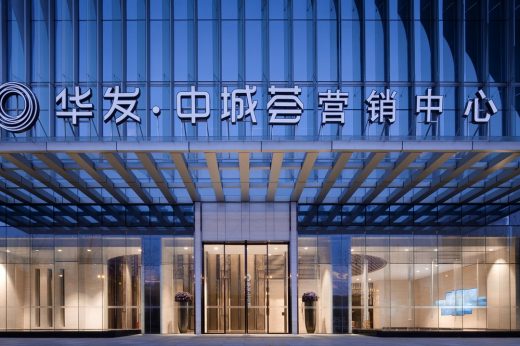
photograph : JING Xu-Feng
Huafa & City Hub in Wuhan
Wuhan Creative Design Center Building
Wuhan Greenland Center Apartment
Greenland Optics Valley Center Wuhan
SCP Wuhan Qingshan InCity Master Plan
New Chinese Architecture
Contemporary Buildings in China
Shanghai Yangtze River Delta G60 Innovation Center, Shanghai
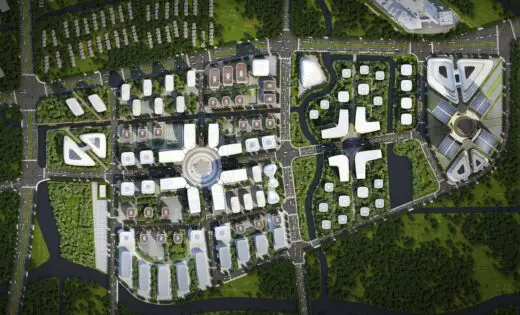
image courtesy of architects practice
Shanghai Yangtze River Delta G60 Innovation Center
Tiantou Intelligent Harbour Concept, Chengdu
Design: Aedas with China Southwest Architectural Design and Research Institute
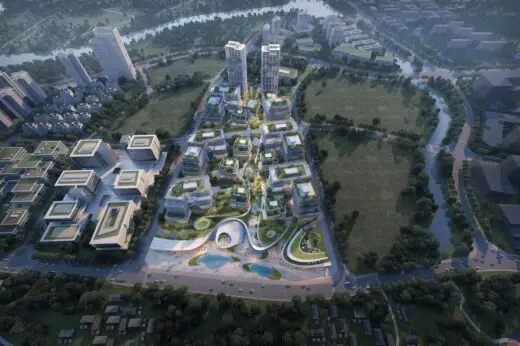
image courtesy of architects practice
Chengdu Tiantou Intelligent Harbour Project
Tower C at Shenzhen Bay Super Headquarters Base, Shenzhen
Design: Zaha Hadid Architects (ZHA)
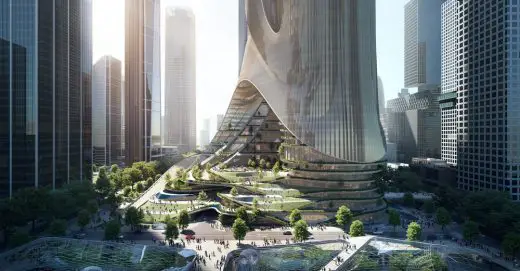
image courtesy of architectural office
Tower C at Shenzhen Bay
Comments / photos for the Citang Street Regeneration, Chengdu, China designed by China Southwest Architectural Design and Research Institute Corp. Ltd page welcome

